custard tart
nutmeg creme patisserie filling & puff pastry base
i went deep into the custard tart rabbit hole this week
i wanted to know how all the custard tart varieties differed and overlapped, and how much of a difference it all made to the final product
for example, south african melktert and portugeuse pastel de nata share the same flavouring (cinnamon), dairy (just milk), and thickener, but use completely different methods to make the custard filling for a very different end result - melktert is set, smooth and sometimes not even baked whereas the pastel de nata are deeply browned in a super hot oven and have a gooey filling even at room temperature
i ended up making three custard tarts over the week to play around with the different custard filling, pastries and flavourings
the first two tests used a sugar syrup based custard, where you make a sugar syrup and stream that into your cooked dairy and starch mixture, then whisk in egg yolks
the filling relies heavily on the sugar syrup to keep it gooey and runny, and this was a little too sweet for my tastes!
the pate sucree also burnt both times well before the custard had any colour on it
for test three, i made up a batch of my favourite creme patisserie (doctored up with slightly more cornstarch and lightly scented with nutmeg) which i baked inside a puff pastry base
the puff pastry held up far better in the oven (likely due to the lower sugar content) and was a great counterpoint to the thicker creme patisserie
the moral of the story is there are a thousand ways to make a custard tart, and the best recipe will just be the one that suits your tastes best
this is mine
yields one small (12cm diameter) tart
ingredients
puff pastry
48g plain flour, plus more for dusting
2g caster sugar
1g salt
10g butter, softened
1/8 tsp white vinegar
20g water
38g fridge cold butter for the butter block
nutmeg creme patisserie
220mL milk
1 tsp vanilla paste
dash ground nutmeg
35g caster sugar
20g cornflour
2 egg yolks
pinch salt
method
puff pastry
sift together the flour (48g), sugar (2g), and salt (1g) into a large bowl
add the softened butter (10g) and rub in with your fingertips until completely worked into the flour
make a well in the centre and slowly pour in the water (40g) and vinegar (1/8 tsp) while whisking together with a fork to combine a rough dough
gently stir together until just combined
turn out onto a well floured benchtop and shape into a rough rectangle
wrap in plastic wrap and let rest in the fridge for at least two hours
right before your dough is ready to be played with, prepare the butter block by cutting the butter (38g) into a thick slab
fold the baking paper around the butter block and alternate rolling out and hammering with the rolling pin as required to form the butter into a solid rectangle without gaps or seams
the butter should be pliable, that is able to be bent without snapping, but not greasy (place the butter in the fridge or on the benchtop for a few minutes as required to get to the right consistency)
once rested, place the dough onto a well floured benchtop and roll out to a rectangle that is the same height and double the width of your butter block
place the butter block (at the right consistency! this is important or your lamination will go wrong from the start) in the middle and enclose in dough
roll out to a 6mm thick rectangle and perform your first book fold
flour the benchtop, dough and rolling pin as often as required
wrap in plastic wrap and return to the fridge to rest for 30 minutes
roll out into a rectangle (the opposite direction to last fold) and complete another book fold
if the dough is springing back when you try and roll it out it needs more time to rest! cover and fridge for at least 15 minutes then come back and try again
wrap, fridge, and repeat for a total of three book folds
once the final fold has been completed and the dough has rested, roll out to a 2mm thick circle
wrap and refrigerate while you prepare the custard filling
nutmeg creme patisserie
combine the milk (220mL), vanilla (1 tsp), and nutmeg (a dash) in a small saucepan
meanwhile, whisk together the sugar (35g), cornflour (20g) and egg yolks (2) in a medium bowl until pale and fluffy
slowly strain the warm milk into the egg yolk mixture, whisking constantly
return the mixture to the saucepan and whisk constantly over medium heat until thickened
remove from the heat and strain into a bowl or container
cover the top with plastic wrap to prevent a skin from forming
assembly
preheat the oven to 200°C
arrange a heavy baking tray in the centre of the oven to preheat (this will help crisp the bottom of the tart pastry)
grease and flour a small (12cm diameter) cake or tart tin
transfer the puff pastry to the lined tin and trim off the edges
spoon the custard filling into the pastry and smooth the top
place the tart on the preheated baking tray in the oven
bake for 10 minutes, then reduce the oven to 180°C and bake for 15-20 more minutes until the pastry is golden brown at the edges and the custard has slightly browned on top
let cool for at least one hour before slicing


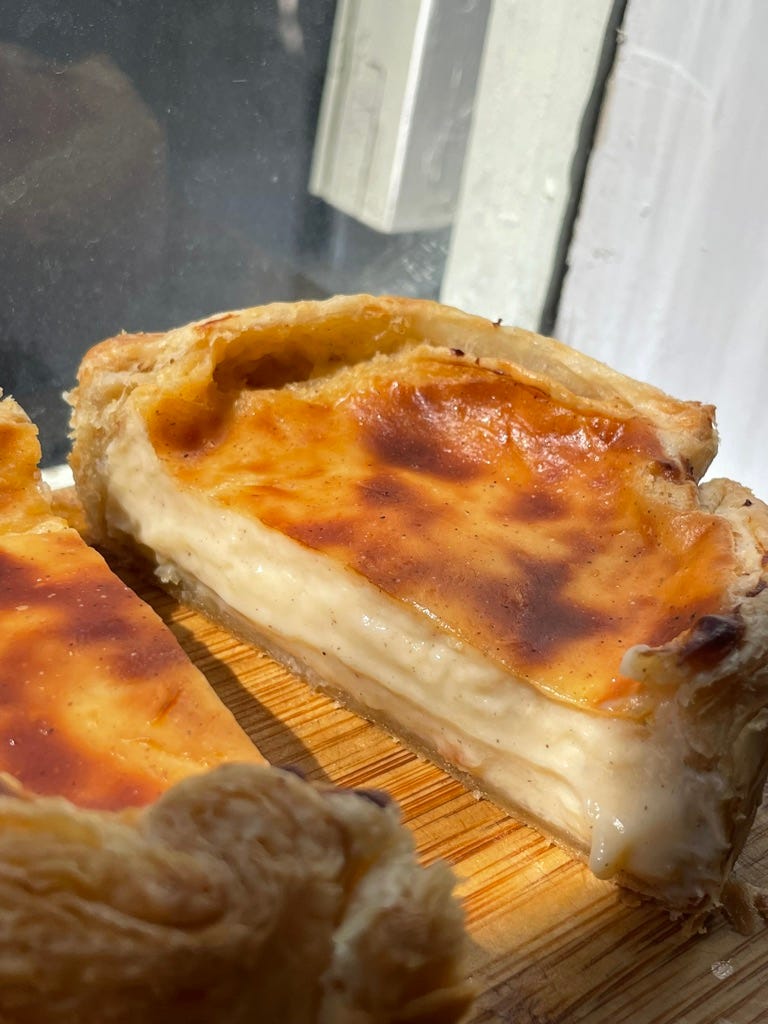

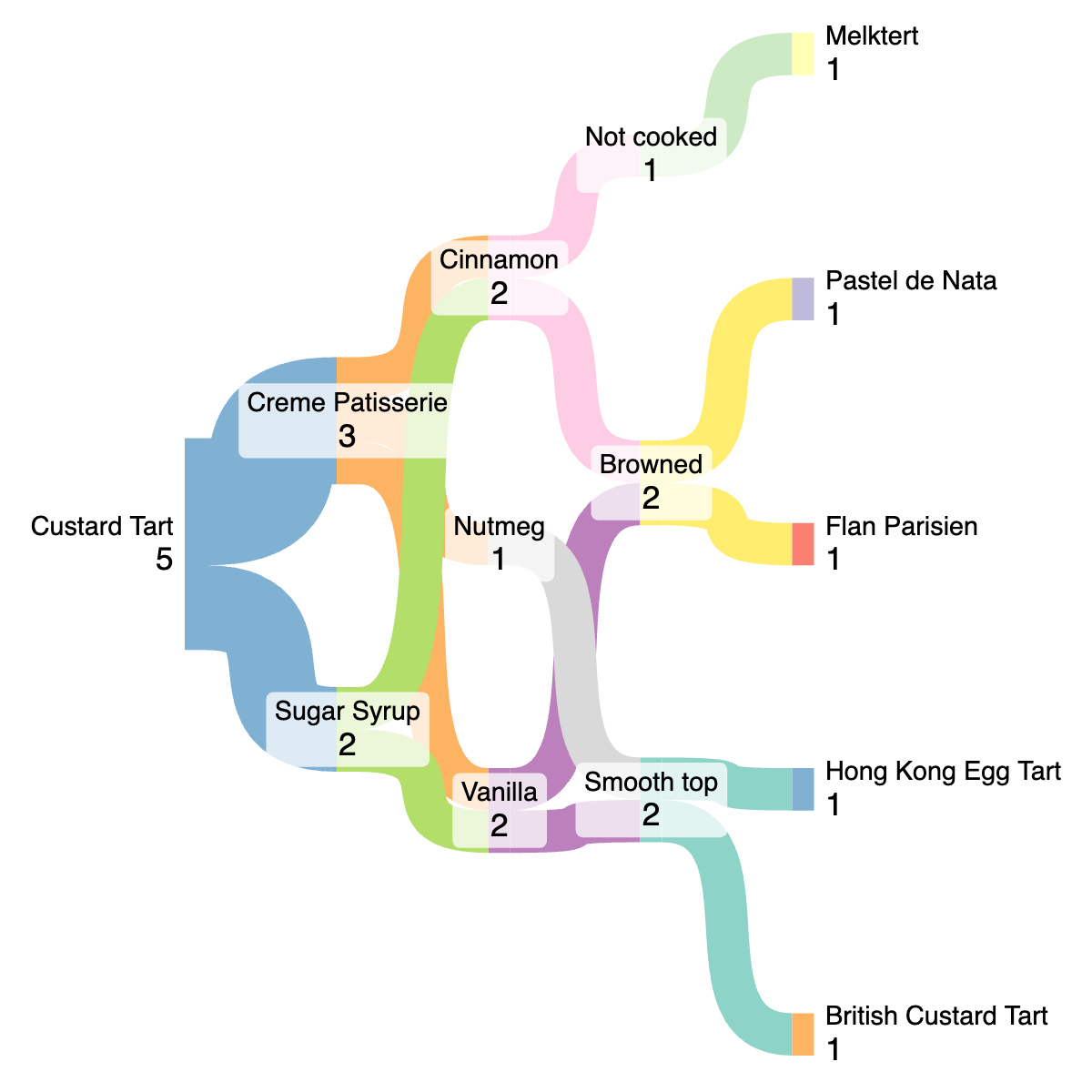

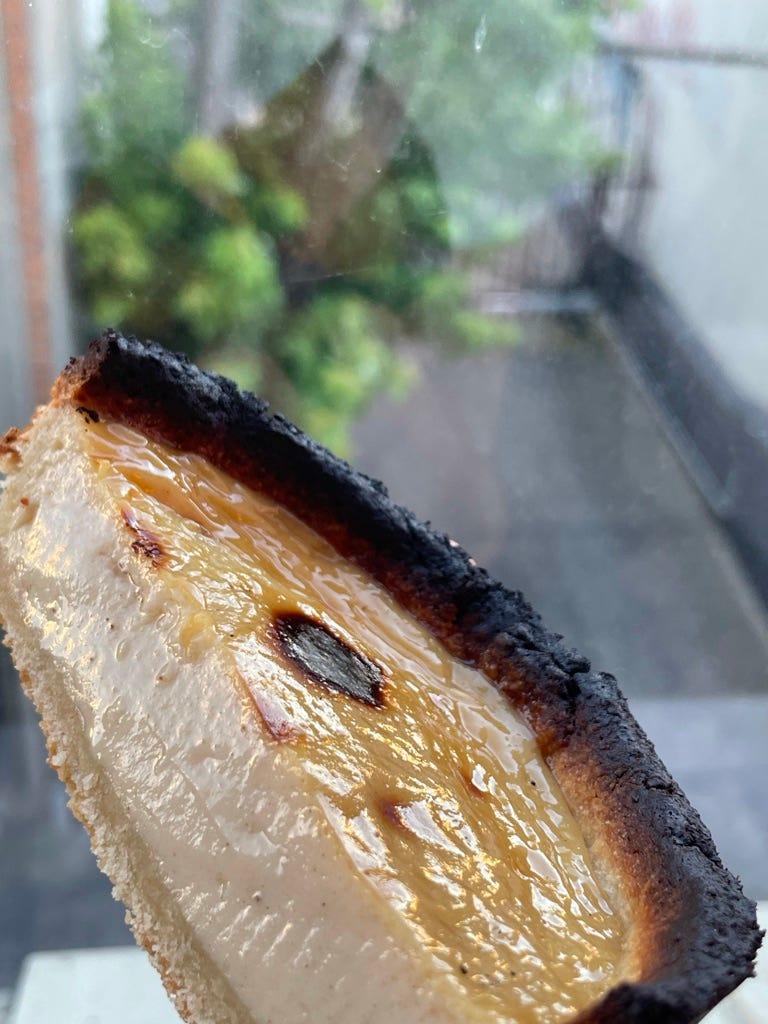
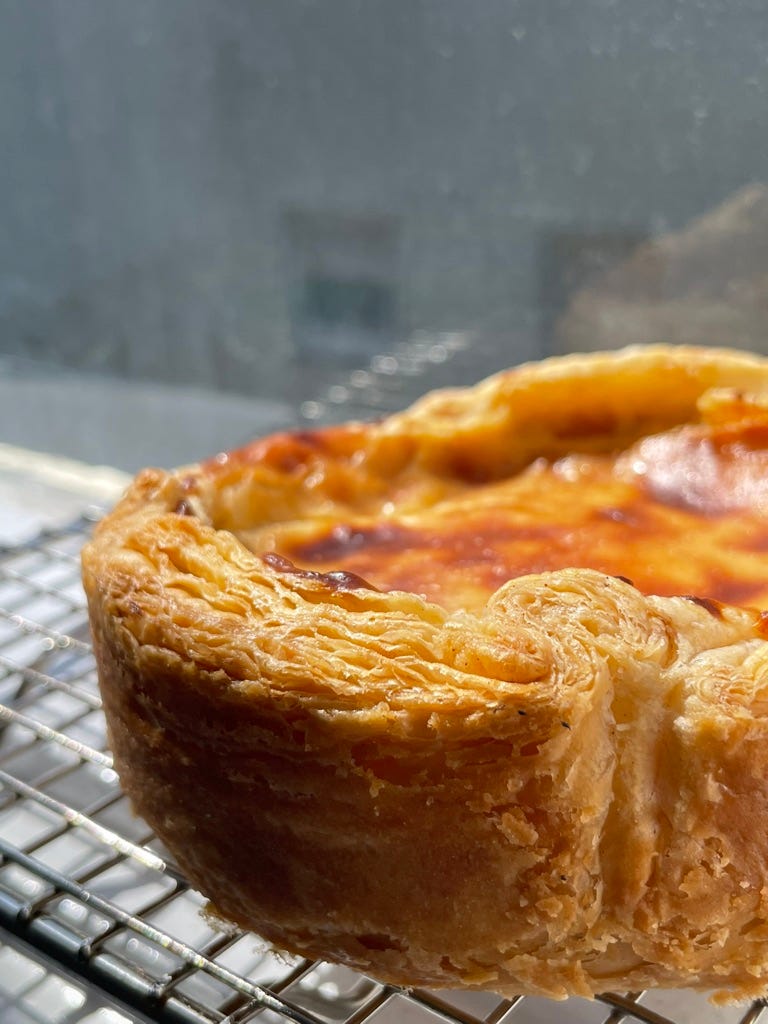
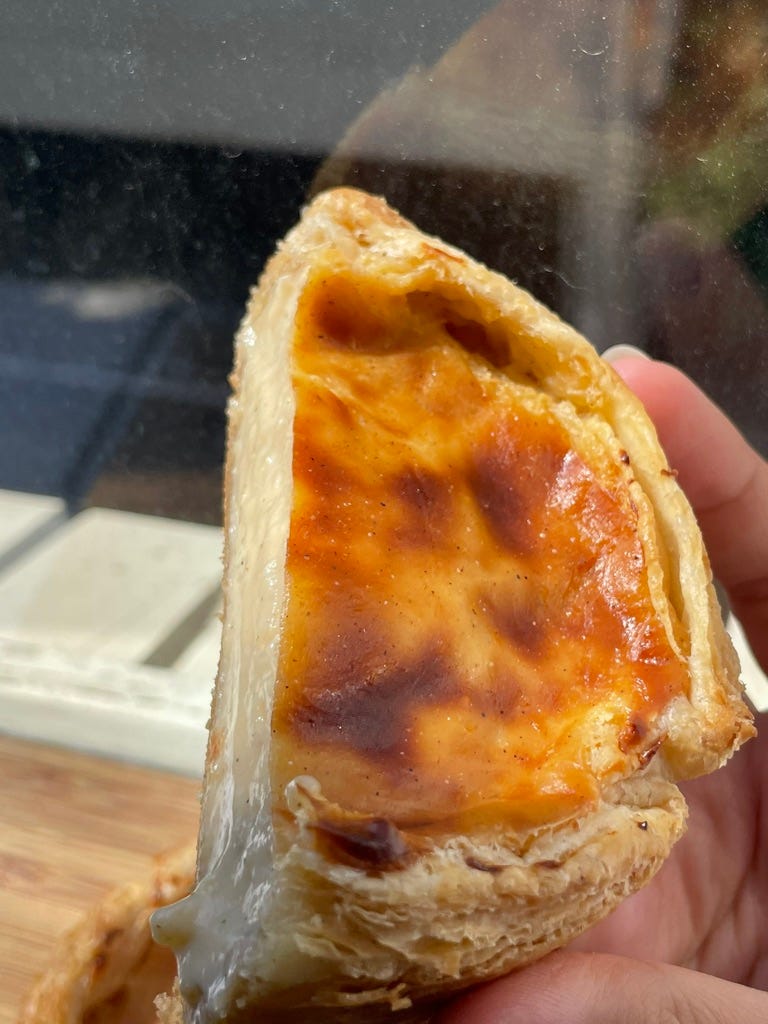
Love this! Does the good old Australian vanilla custard block thing fit in here somewhere?
This looks and sounds incredible! Say, have you tried Flan Pâtissier?